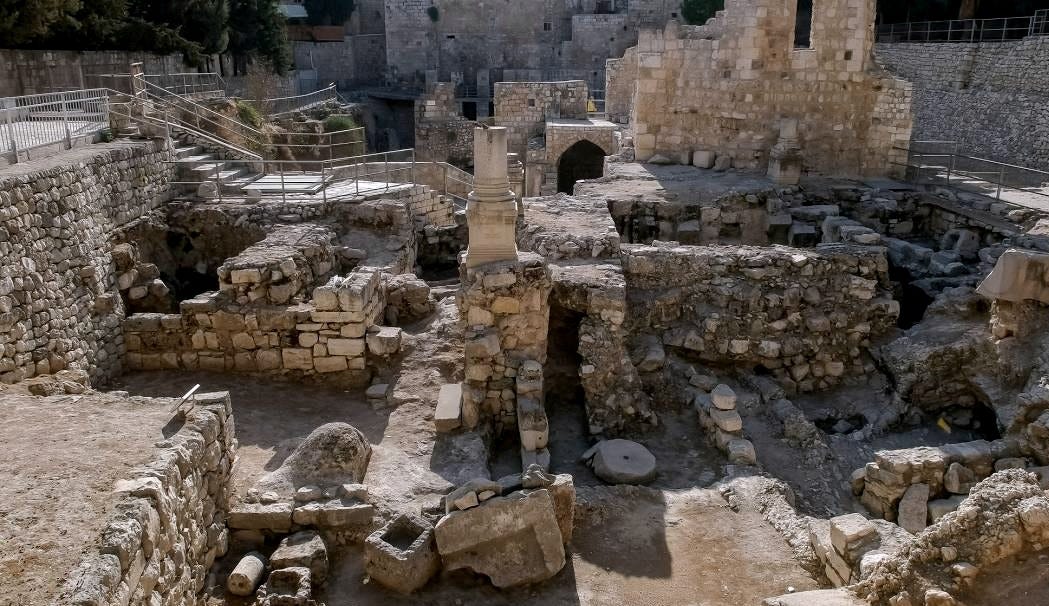Four More Gospel Number Puzzles (You Have Probably Never Noticed)
Is a Secret Code Embedded in the Gospels?
Following an earlier post, we take a look at four more number puzzles.
#4. Thirty Eight Years (The Healing of the Paralysed Man)
In the Fourth Gospel, Jesus heals a paralysed man by the pool of Bethesda. In our introduction to his character, we are told that ‘a certain man was there who had an infirmity thirty-eight years’ (5:5). Why has John told us the length of his sickness?
It is possible that this detail is a flash of memory; perhaps mentioned to set up the magnitude of the coming miracle. We find a similar usage in Mark, when we are told that a woman had been suffering for twelve years. No one could heal her but Jesus.
In support of a historical reading, Bethesda provides a cautionary tale in over-allegorising numbers. Commentators once thought that the ‘five porticoes’ mentioned in the same episode symbolised the five books of Moses. That is, until archaeologists discovered a group of porticoes in Jerusalem – and there were five of them!1
If we do read thirty-eight years symbolically, however, an attractive option presents itself. Namely, that this is the number of years Israel wandered in the wilderness. When I first came across this explanation, I scratched my head. Were the Israelites not in the desert forty years, between leaving Egypt and entering the promised land?
Forty is the round figure often mentioned in the Bible. But in Deuteronomy 2:14, it is stated that it was thirty-eight years from Kadesh Barnea to the Zered Valley. This was specifically the time it took for the generation of Israelites who had been wandering in the wilderness to die out, since their wandering was as a sentence for sin.
This may not seem like a terribly strong parallel. Yet Jesus goes on to say to the man: ‘Do not sin any more, so that nothing worse happens to you’ (5:14). This verse implies that the man’s sin had led to his infirmity – a common connection in ancient texts.
This link between the man’s sin and his sickness for thirty-eight years is thus more closely related to Israel’s wandering, which was for thirty-eight years as a result of their sin. Indeed, this specific length of time is mentioned in Deuteronomy 2:4 because it was the duration it took for the Israelites to die out as a punishment.
In John, then, we might not only find an allusion to but a reversal of Israel’s fate. Whereas the Israelites died after thirty-eight years in the wilderness, the man who has been paralysed for thirty-eight years received the healing and salvation of Christ.
#5. The Feeding of the Five Thousand (A Gentile Banquet)
The feeding of the five thousand is the only miracle to occur in all four Gospels. But in Mark and Matthew, it is followed by a near-identical miracle: the feeding of the four thousand. Why do Mark and Matthew follow the first feeding with a second?
The best explanation I can see is that the feeding of the four thousand emphasises the extent of Jesus’ ministry. While the first messianic banquet takes place in Jewish Galilee, the second is in the region around the Greek Decapolis, opposite Galilee. After feeding five thousand Jews, Jesus goes and feeds four thousand Gentiles.
But how does this connect to the number four thousand?
If there is any significance to the number, I wonder whether it lies in four, which is often used in the Scriptures to represent geographical completeness. We might think of Revelation’s ‘four corners’ of the earth, which is a common ancient merism, representing the whole earth and everything in between (7:1).
The sense of ‘completeness’ is also brought out in another element in the feeding: the repeated use of the number seven. While in the first banquet with seven items, there are twelve baskets left over – symbolising the twelve tribes of Israel – here we are left with seven baskets, representing the completeness of Jesus’ mission.




